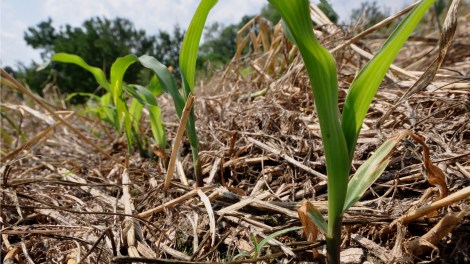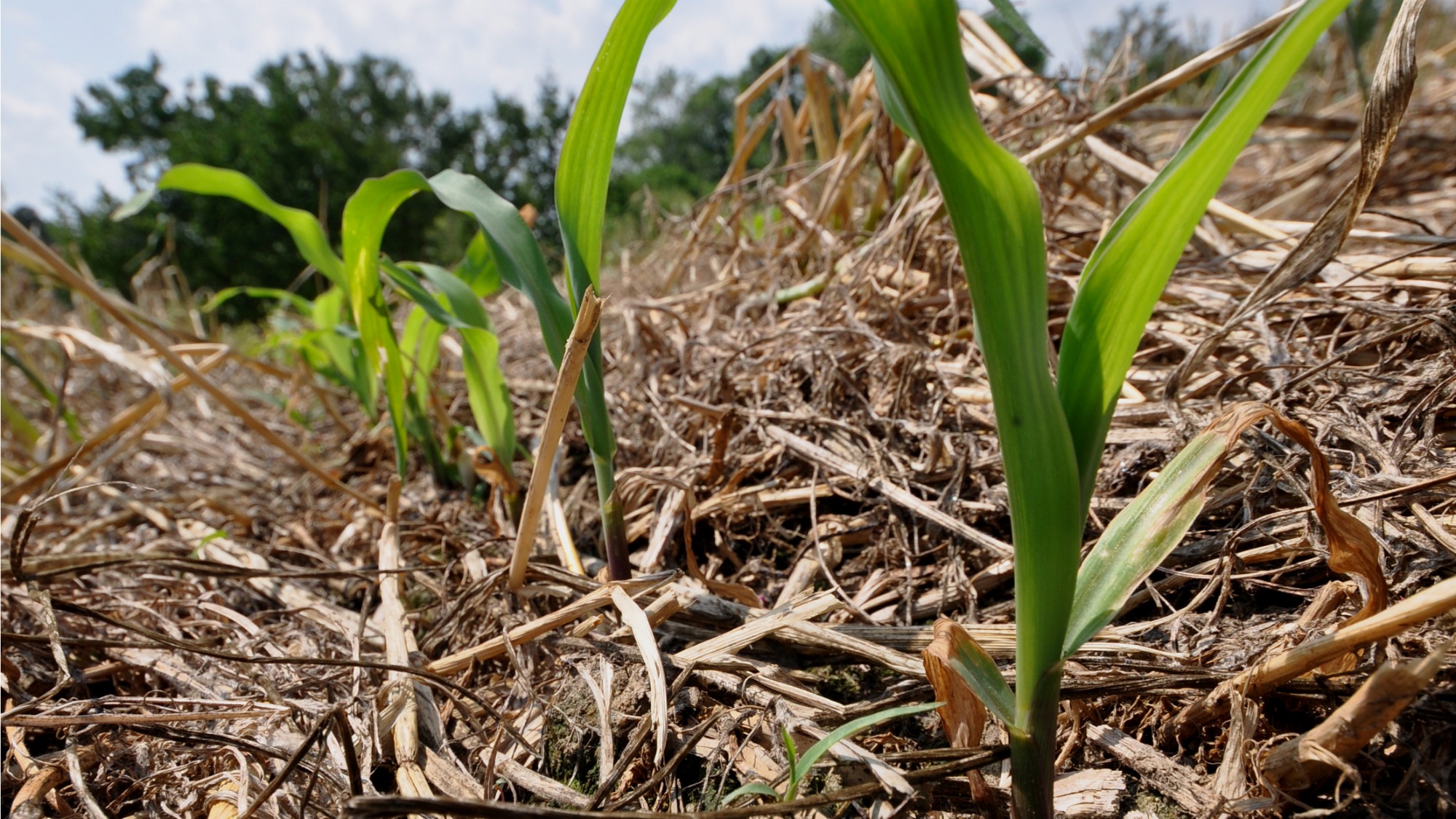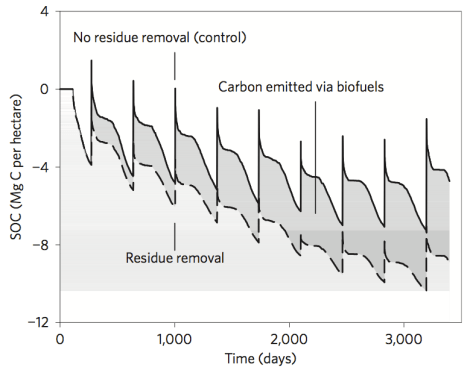
Ron Nichols, USDAYoung corn growing in the residue of the previous crop.
A lot of carbon-rich waste is left behind after a cornfield is stripped of its juicy ears. It used to be that the stalks, leaves, and detrital cobs would be left on fields to prevent soil erosion and to allow the next crop to feast on the organic goodness of its late brethren. Increasingly, though, these leftovers are being sent to cellulosic ethanol biorefineries. Millions of gallons of biofuels are expected to be produced from such waste this year — a figure could rise to more than 10 billion gallons in 2022 to satisfy federal requirements.
But a new study suggests this approach may be worse for the climate, at least in the short term, than drilling for oil and burning the refined gasoline. The benefits of cellulosic biofuel made from corn waste improve over the longer term, but the study, published online Sunday in Nature Climate Change, suggests that the fuel could never hit the benchmark set in the 2007 U.S. Energy Independence and Security Act, which requires that cellulosic ethanol be 60 percent better for the climate than traditional gasoline.
The problem is that after corn residue is torn out and hauled away from a farm field, more carbon is lost from the soil. This problem is pervasive throughout the cornbelt, but it’s the most pronounced in Minnesota, Iowa, and Wisconsin, owing in part to the high carbon contents of soils there.
Researchers used a supercomputer to run models to estimate the effect of removing corn residue from 128 million acres of farmland in 12 corn-farming states. Removing the residue was found to release 50 to 80 grams of carbon dioxide from the exposed soil for every megajoule of biofuel produced. Add to that figure the biofuel’s tailpipe CO2 emissions and, voila, you get an average of 100 grams of CO2 released for every megajoule of power produced — which is 7 percent worse than emissions from regular old gasoline.
The key findings are shown in the following graph from the paper. The top line shows that soil organic carbon (SOC) is gradually lost over nine years when corn residue is left in place. But when the residue is hauled off to be turned into biofuel, as shown in the dashed lower line, the loss of soil carbon is more rapid. The loss of such soil carbon is a blow for the farm — crops need that material to grow. But it’s also a blow for the climate, because the carbon ends up in the atmosphere as a greenhouse gas.
The researchers found that the loss of soil carbon is an issue regardless of whether some of the residue is removed from a field or all of it. “If less residue is removed, there is less decrease in soil carbon, but it results in a smaller biofuel energy yield,” said report coauthor Adam Liska, an assistant professor at the University of Nebraska at Lincoln.
The research was funded with $500,000 from the federal government — which was quick to pan the results.
An EPA spokeswoman told the AP that the study “does not provide useful information relevant to the life cycle greenhouse gas emissions from corn stover ethanol.” And the biofuels industry complained that the researchers did not give a good explanation for why their conclusions contradicted other recent studies.
But the AP has previously exposed gaping holes in the EPA’s own studies, which have concluded that ethanol provides big climate benefits.
We asked Liska how officials could use his findings to help slow down global warming. He suggested that they start by using their ears (not the corn kind). “If emissions are going to be decreased, the EPA should accept these findings as valid,” he replied.





